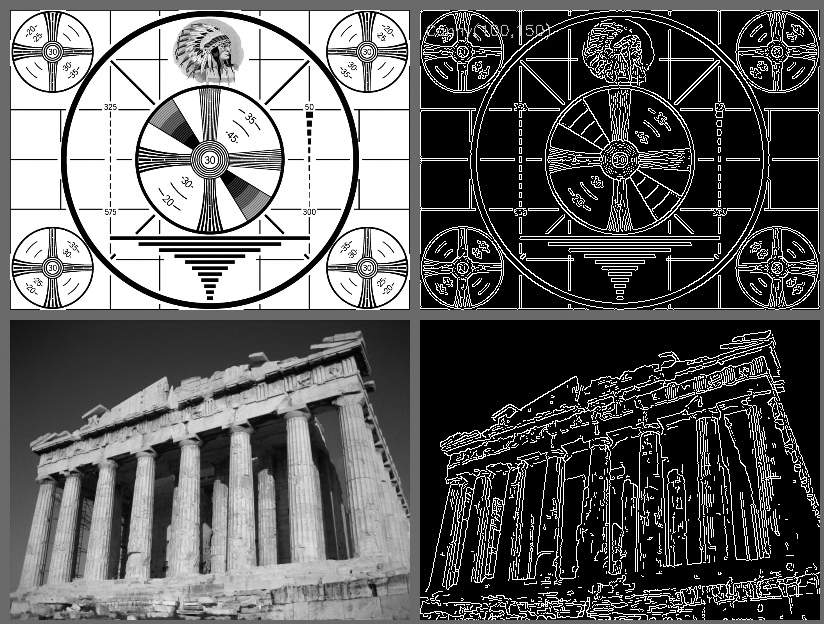Hough Transforms
The Hough transform[68] is a method for finding lines, circles, or other simple forms in an image. The original Hough transform was a line transform, which is a relatively fast way of searching a binary image for straight lines. The transform can be further generalized to cases other than just simple lines.
Hough Line Transform
The basic theory of the Hough line transform is that any point in a binary image could be part of some set of possible lines. If we parameterize each line by, for example, a slope a and an intercept b, then a point in the original image is transformed to a locus of points in the (a, b) plane corresponding to all of the lines passing through that point (see Figure 6-9). If we convert every nonzero pixel in the input image into such a set of points in the output image and sum over all such contributions, then lines that appear in the input (i.e., (x, y) plane) image will appear as local maxima in the output (i.e., (a, b) plane) image. Because we are summing the contributions from each point, the (a, b) plane is commonly called the accumulator plane.

Figure 6-8. Results of Canny edge detection for two different images when the high and low thresholds are set to 150 and 100, respectively
It might occur to you that the slope-intercept form is not really the best way to represent all of the lines passing through a point (because of the considerably ...
Get Learning OpenCV now with the O’Reilly learning platform.
O’Reilly members experience books, live events, courses curated by job role, and more from O’Reilly and nearly 200 top publishers.

